How to make a bug hotel and transform your garden into a thriving minibeast haven
From ladybirds to bumble bees, here's how to make a bug hotel like a pro
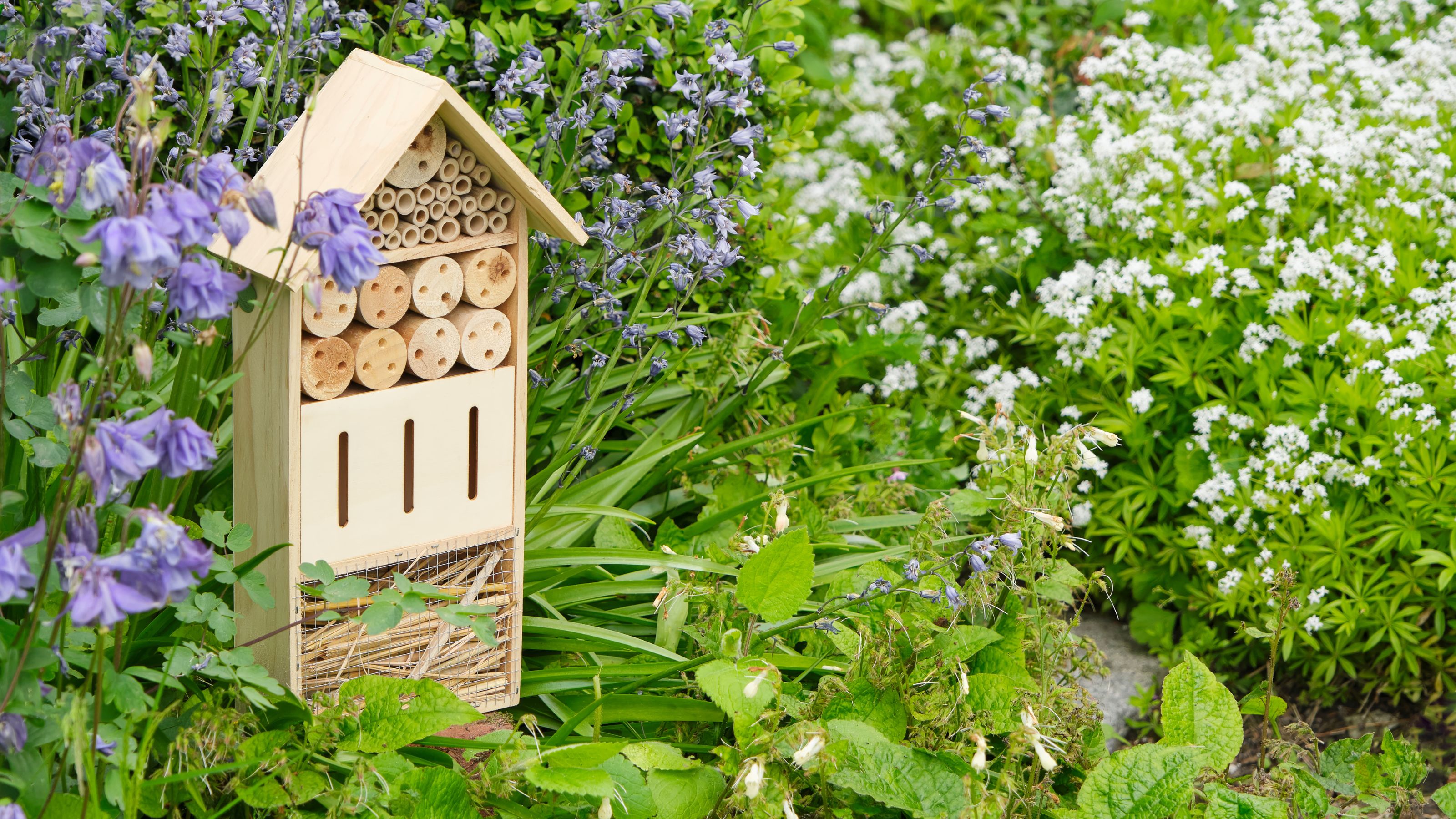

There's nothing so synonymous with glorious summer sunshine than the sound of bees buzzing lazily around your garden – so why not learn how to make a bug hotel?
A must-have for any wildlife garden, a bug hotel is a brilliant way to ensure your outdoor space is frequented by helpful minibeasts and pollinators throughout the year. Think ladybirds, butterflies, bumblebees, centipedes, and more, all of whom will play a valuable role in maintaining your own personal oasis.
Even better? It's one of those budget garden ideas that will quickly prove itself to be a fun project for you to get stuck into, allowing you to spend some time in the great outdoors and breathe in all of that fresh (perfumed by summer flowers, no less) air.
How to make a bug hotel
Building a bug hotel can be really fun and an easy way to help insects and other wildlife in your garden.
'This a great activity, particularly for kids, as anyone can easily put a bug hotel together. Insects in the garden are essential and making a bug hotel is a simple way to attract them, give them shelter and food,' says Morris Hankinson, director of Hopes Grove Nurseries.

Morris Hankinson is the founder and managing director of Hopes Grove Nurseries Ltd, the UK’s only specialist grower-retailer of hedging plants. He established the thriving business in 1992, shortly after graduating with a Commercial Horticulture Degree from Writtle College, Essex.
'They can be small or large, depending on your needs, and can even offer shelter to hedgehogs as well as spiders, ladybirds and other insects,' he adds.
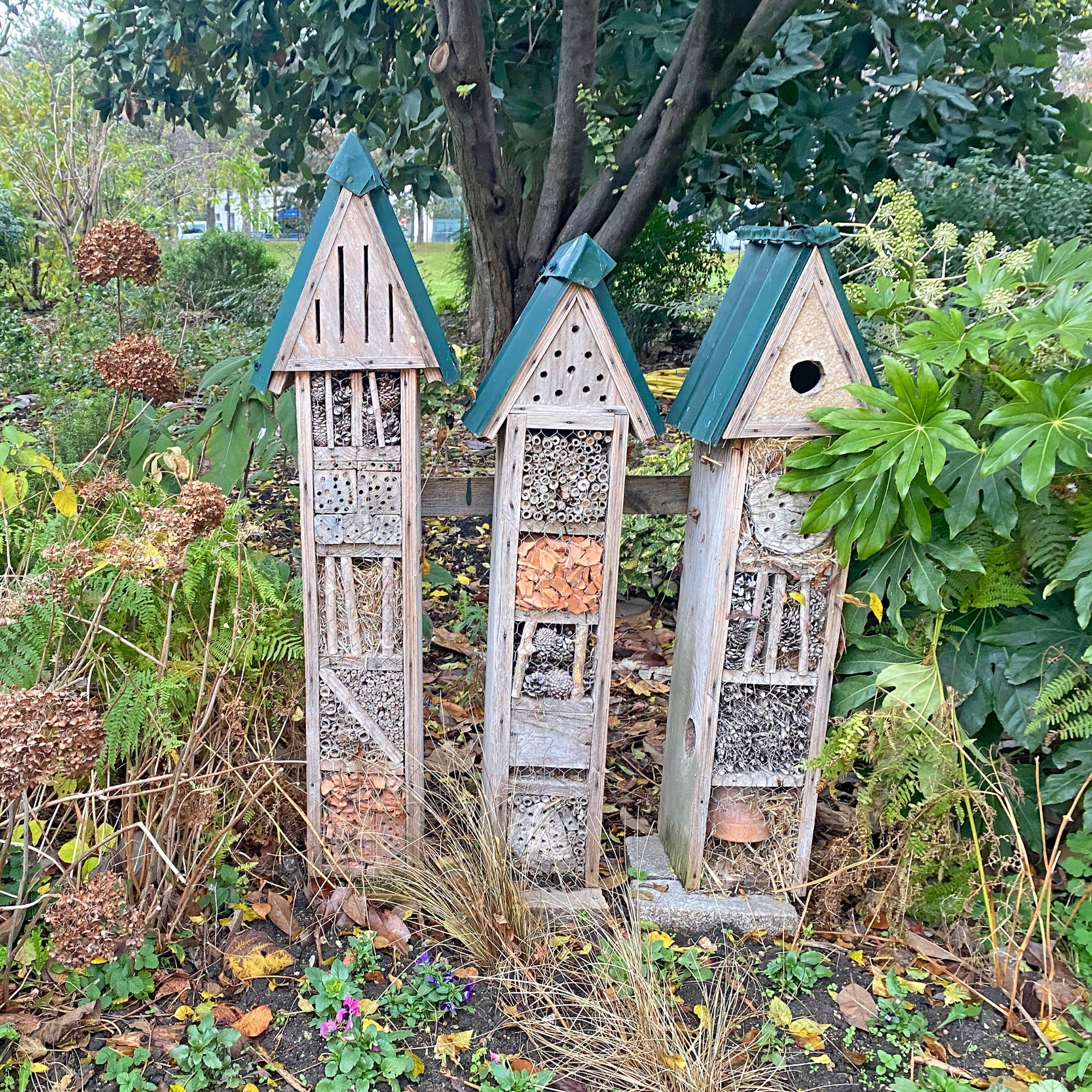
'The best part is that your bug hotel can be as simple or as elaborate as you want it to be,' agrees Sean McMenemy, wildlife expert and founder of Ark Wildlife.
Get the Ideal Home Newsletter
Sign up to our newsletter for style and decor inspiration, house makeovers, project advice and more.
'Simply dedicating a corner of your outdoor space to bug-friendly materials will work, or you could get creative and build a multi-storey mansion.'
Noting that you can learn how to build bug hotels at any time of the year, Sean goes on to say that 'all you need to do is venture outdoors and look around'.
'You’ll soon find all kinds of natural materials that will make for the perfect DIY dwelling.' he promises.
With that in mind, then, here are some of the easiest ways to make your own bug hotel.
1. Log pile lodges
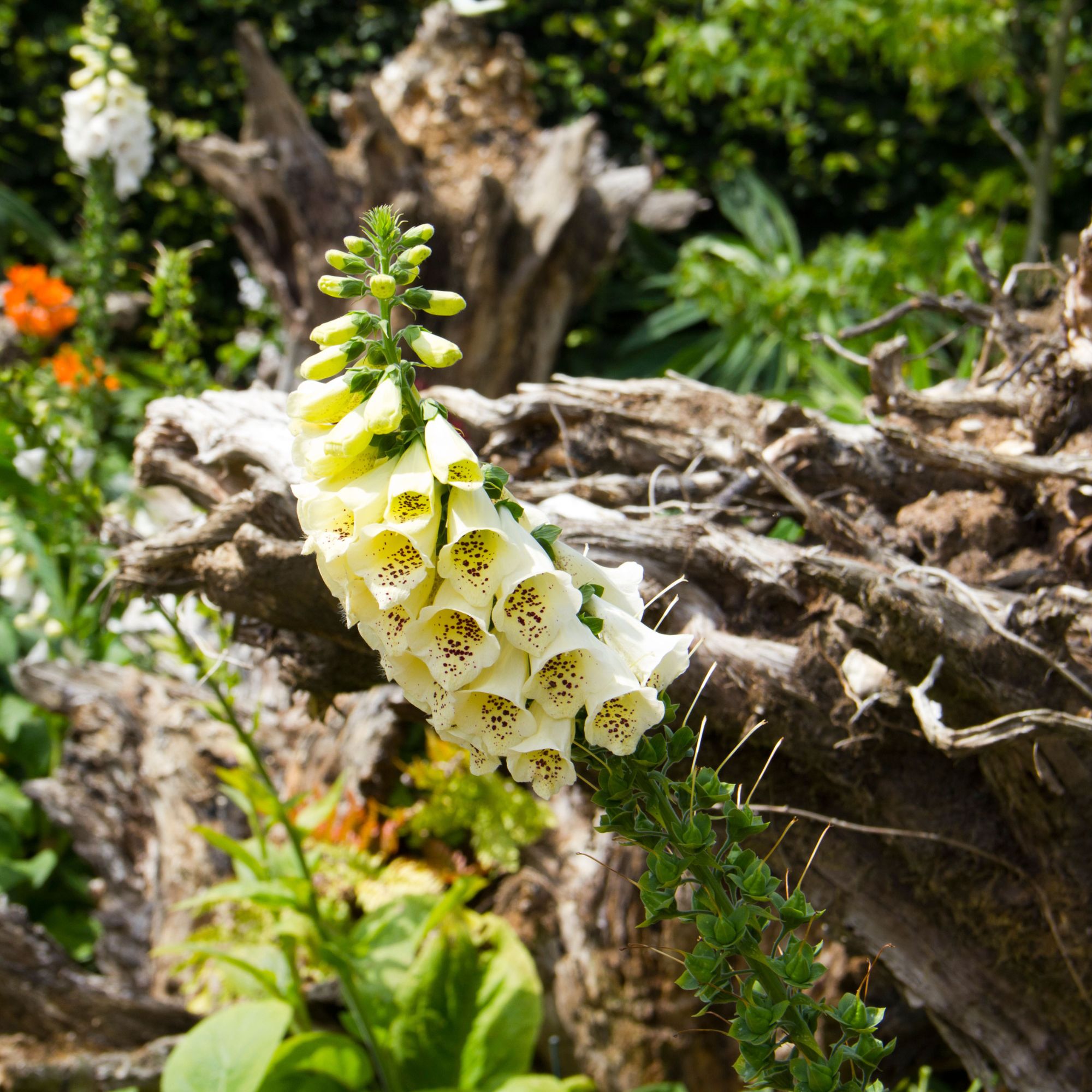
If you're in the market for an easy way to make a bug hotel (and keen to try out the ever-appealing trend for a garden stumpery), then you're in luck: logs and sticks are a brilliant way to get started.
'Logs and stick piles are a great way to provide shelter for bugs. In fact, decaying wood is an underrated wildlife attractor, especially for beetles and leafcutter bees who burrow into the dead wood to make nests,' says Sean.
'By gathering sticks, logs and twigs and piling them up you can expect to see ladybirds, lacewings and even butterflies pay a visit, even if it’s just for a short rest before fluttering off on their way!'
2. Pinecone palace
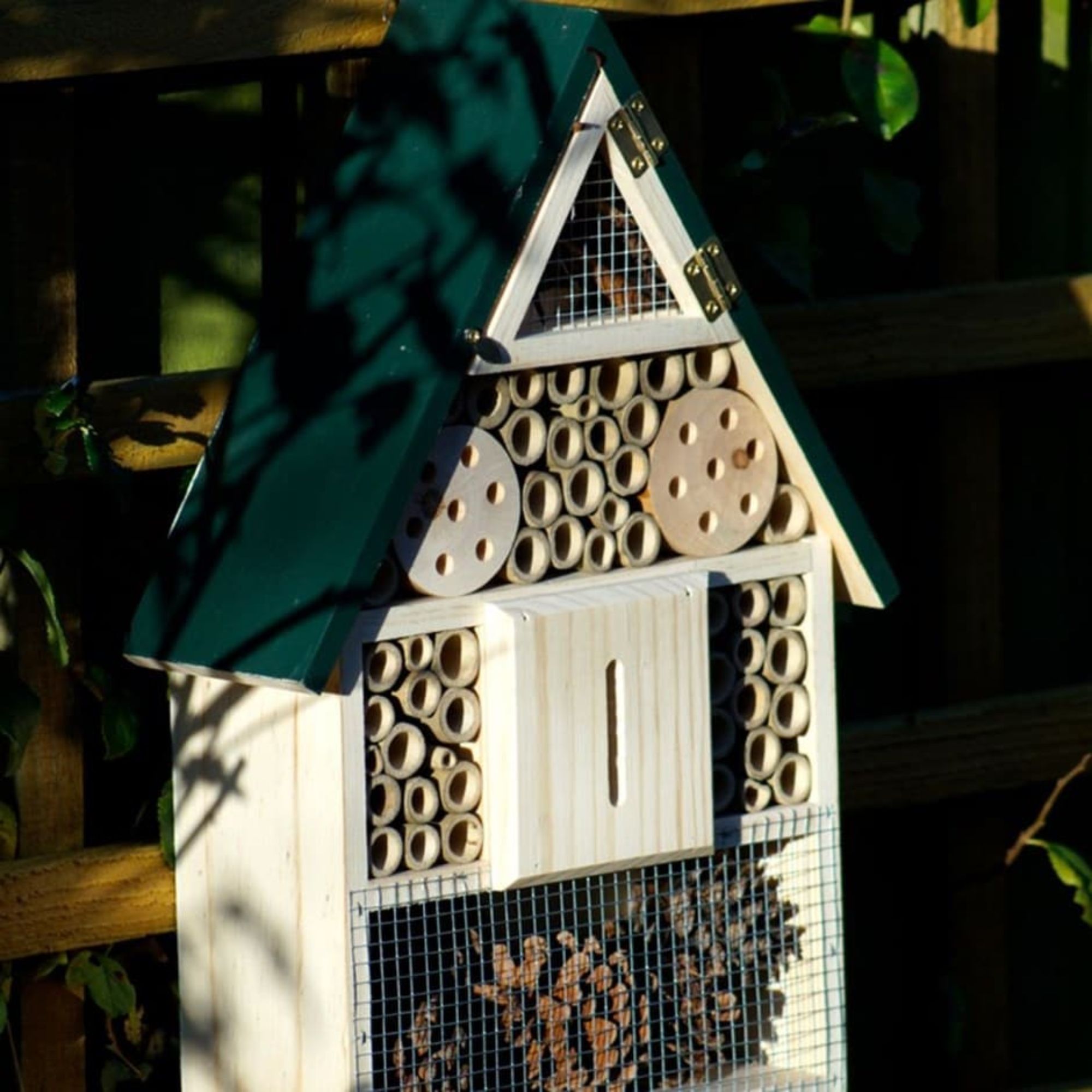
Pinecones are a versatile choice for anyone learning how to make a bug hotel (and they can be added to any pre-built one, too, such as the insect house from Crocus seen above).
'This is because many creatures enjoy crawling through the crevices and snuggling down into the scales for shelter,' says Sean.
'By bundling a bunch of pinecones together and interlocking the scales, then stuffing the gaps with dried leaves, you can create a sturdy and cosy abode. Just make sure they are placed in a dry and sheltered area within the hotel or garden, as pinecones shut their outer scales when they get wet!'
3. Bamboo bungalow
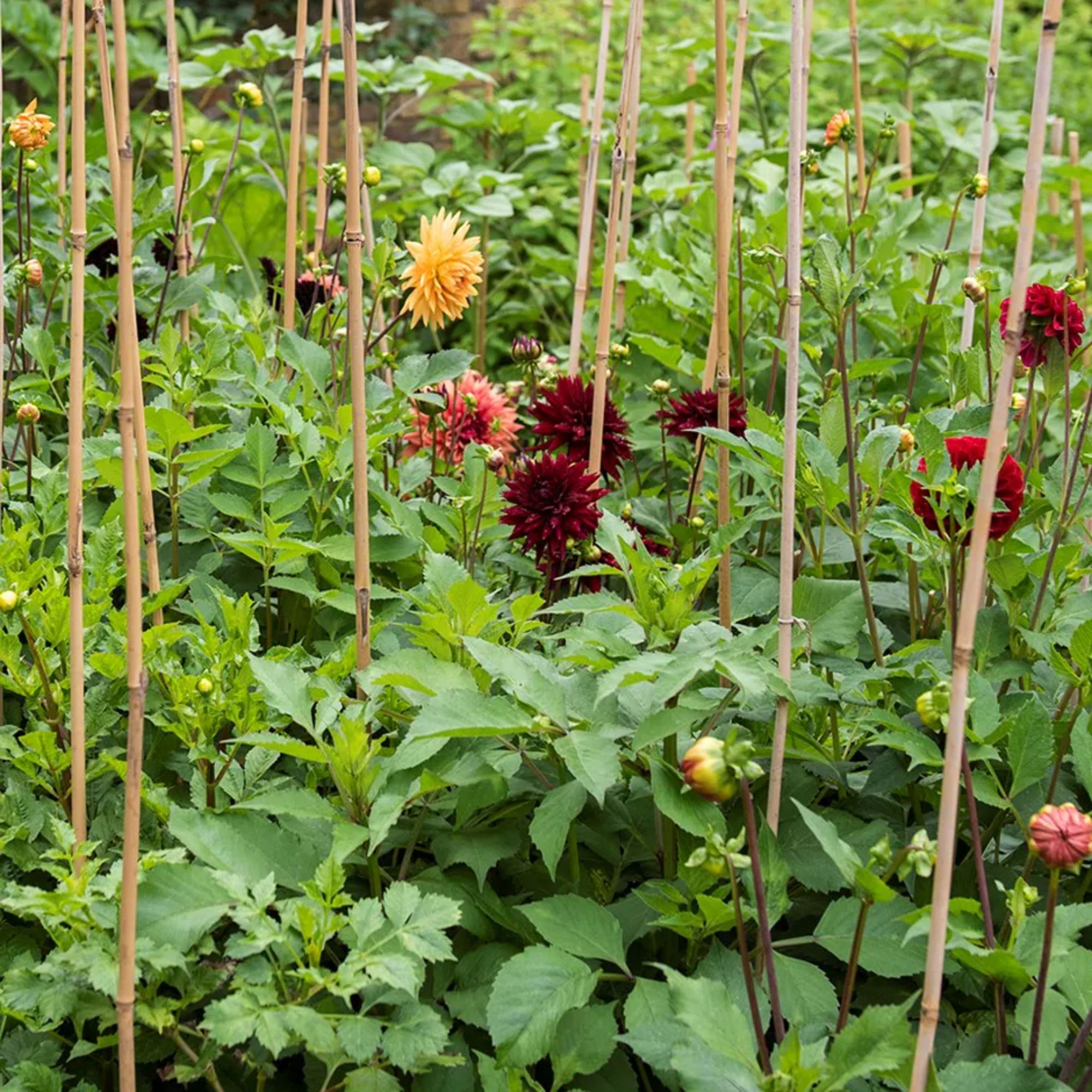
If you are looking to try out some fun upcycling ideas for the garden, it's worth making a bug hotel from old bamboo canes, dead plant stems, or 'even by drilling holes up to 11mm into chunks of wood,' says Sean.
'Doing so can make excellent nesting spaces for some solitary bees, such as the flower, leafcutter, and mason bee,' he explains.
'If you’re lucky enough to get these marvellous creatures nesting in your bug hotel, you’ll notice that the openings to the holes are sealed shut with dirt. That is because they are incredibly resourceful creatures and will source a bunch of plant materials to chew up and seal shut their nests for protection against predators.'
4. A castle of pallets

One of our favourite pallet ideas yet, this fun upcycling project will let you transform yours into a bug hotel ready and open for guests.
'I recommend making a solid, stable structure which is no more than one meter high which can be made any spare wood including from old pallets,' says Morris, 'and make sure your big hotel has a roof to keep rain out.'
He adds that 'the important bit is to make sure your bug hotel has lots of different areas or various sizes to provide tunnels, warm resting places and different shaped nooks and crannies'.
'You can do this by adding in old wood, such as twigs and ripped bark from pruned hedges and trees. Hollow stems such as bamboo are useful for solitary bees, while broken tiles and stones in larger spaces can help garden frogs and toads. Finally, add in lots of dry leaves or straw, cardboard is useful, and even pet hair!' he finishes.
FAQs
How do you make a simple bug hotel?
If you are unable to make a bug hotel in the shape of a birdhouse or A-frame shape, Morris Hankinson of Hopes Groves Nurseries says the easiest solution is 'to simply pile lots of different natural materials together somewhere sheltered and away from the possibility of predators'.
'Using all of the same materials as you would fill a bug hotel with, lay them together in a bundle or tie them up with string and keep a look out to see what insects come along,' he adds.
What do you need for a bug hotel?
If you want to make a bug hotel, you will need some dead wood and loose bark, ideally peppered with plenty of tunnels and small tubes made out of bamboo, reeds and drilled logs.
'Planting a variety of nectar-rich plants around your bug hotel will encourage even more creatures to come check out your patch,' adds Sean McMenemy, wildlife expert and founder of Ark Wildlife.
'By having food readily available, insects are more likely to stick around and stay nearby. Wildflowers are easy to care for and require very little looking after, but provide vital pollen for bees, butterflies and other marvellous minibeasts!'
If you'd like to plant some wildflowers that will keep your minibeasts well fed in each and every, Sean suggests primrose, and forget-me-nots for spring, oxeye daisy and foxgloves for summer, and birds-foot trefoil and ivy for autumn.
How do I attract bugs to my bug hotel?
While you could offer up an empty bug hotel, it's better to ensure your guests have something to enjoy: try adding lots of treats from the garden, such as pinecones, bark, straw, decomposing leaves, twigs, or even pet hair.
As well as planting wildflowers nearby, it's also a good idea to build a hydration station, too – particularly for the drier summer months.
'Making an insect hydration station is a fantastic way to provide bees, butterflies and bugs with water, especially during the summer months,' says Ark Wildlife's Sean McMenemy.
'Insects will use the hydration station to stay cool, keep hydrated and provide for their nests. Natural bodies of water like rivers and lakes can often be too deep and put them at risk of drowning, so an insect hydration station can provide a safe place where bees and other insects can gather.'
To create your hydration station, Sean advises that you use an old plant pot or a shallow dish (one without drainage holes), and 'place large pebbles and stones within the pot to create a sturdy ground for insects to perch on and access the water'.
'Fill the pot with water, but make sure the tops of the pebbles and stones are exposed so insects can safely get to the water without getting submerged. Then position your hydration station in a cool and shaded space near your flower beds or pots, or in an area rich with insect activity!' he finishes.
Now that you know how to make a bug hotel, all that's left for you to do is decide what kind of structure you'd like to make for your minibeasts – and which beautiful wildflower seeds you'll be planting for their enjoyment, too.
Happy building, then, and may your garden be blessed by many happy (helpful) bugs this gardening season!

Kayleigh Dray became Ideal Home’s Acting Content Editor in the spring of 2023, and is very excited to get to work. She joins the team after a decade-long career working as a journalist and editor across a number of leading lifestyle brands, both in-house and as a freelancer.
-
 Will a conservatory add value to your home and how can you maximise it?
Will a conservatory add value to your home and how can you maximise it?This is what the pros say
By Amy Reeves
-
 I’ve been looking for a new signature scent for my home and The White Company's new fragrance is the exact summer holiday smell I needed
I’ve been looking for a new signature scent for my home and The White Company's new fragrance is the exact summer holiday smell I neededSantorini smells fresh, summery and sophisticated
By Kezia Reynolds
-
 How to remove algae from garden walls in five steps – and the cleaning product experts rave about for tackling it fast
How to remove algae from garden walls in five steps – and the cleaning product experts rave about for tackling it fastExperts share their top tips for getting garden walls algae-free
By Katie Sims